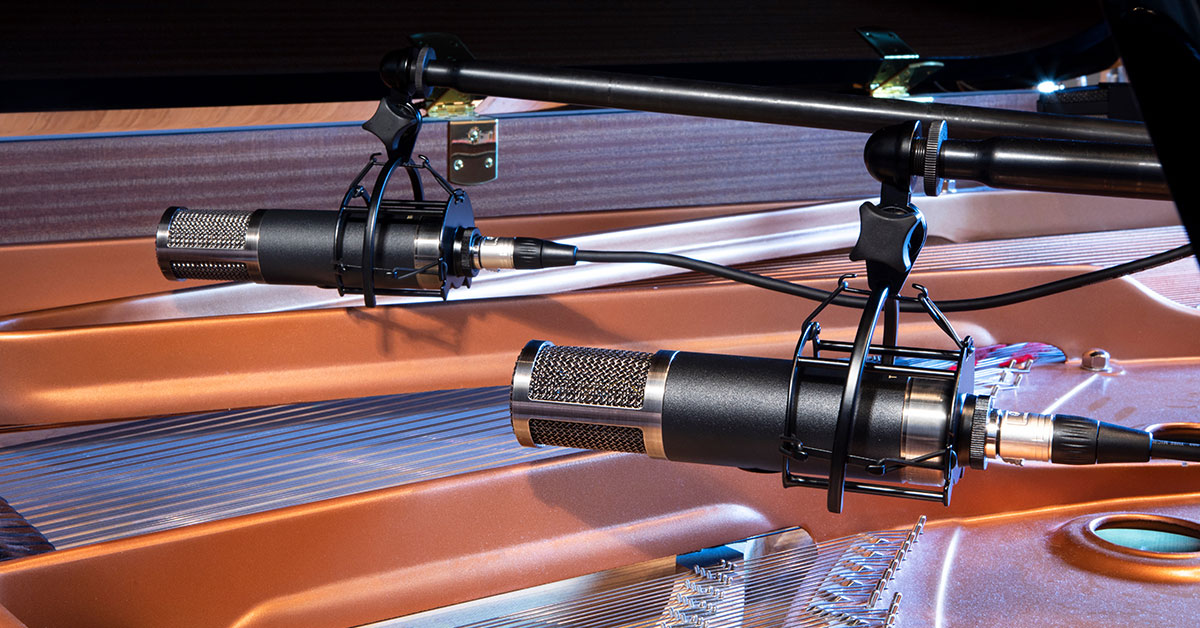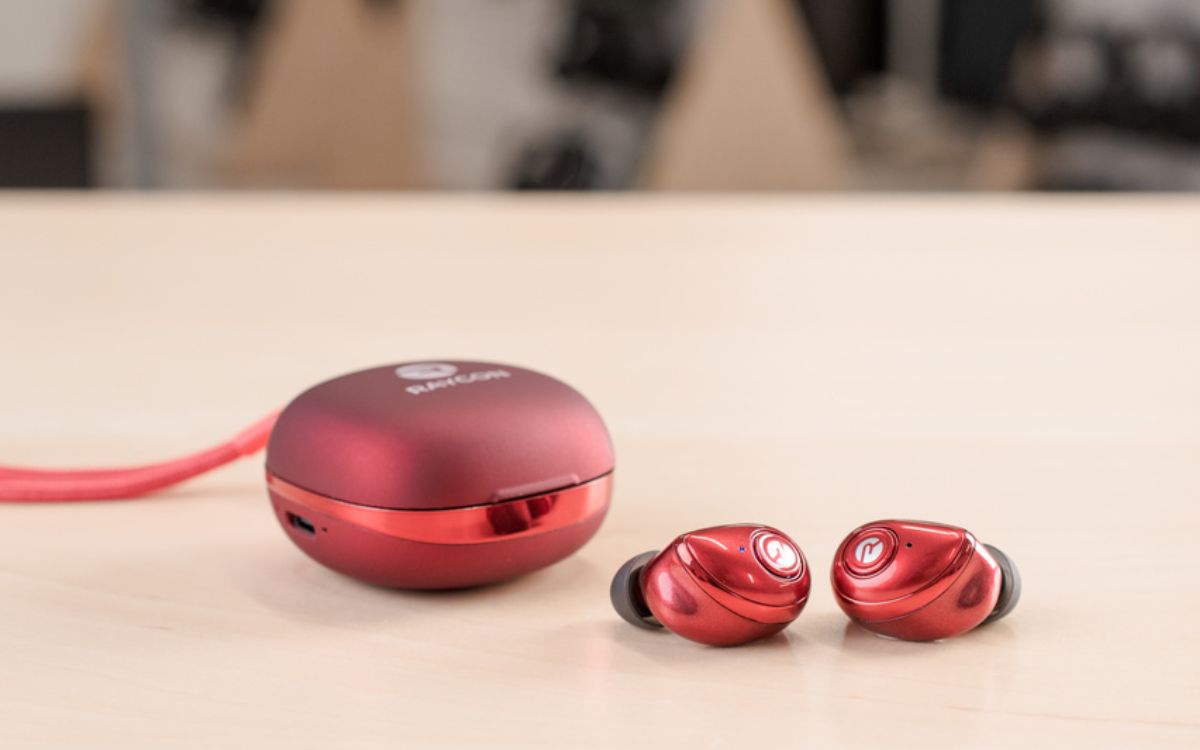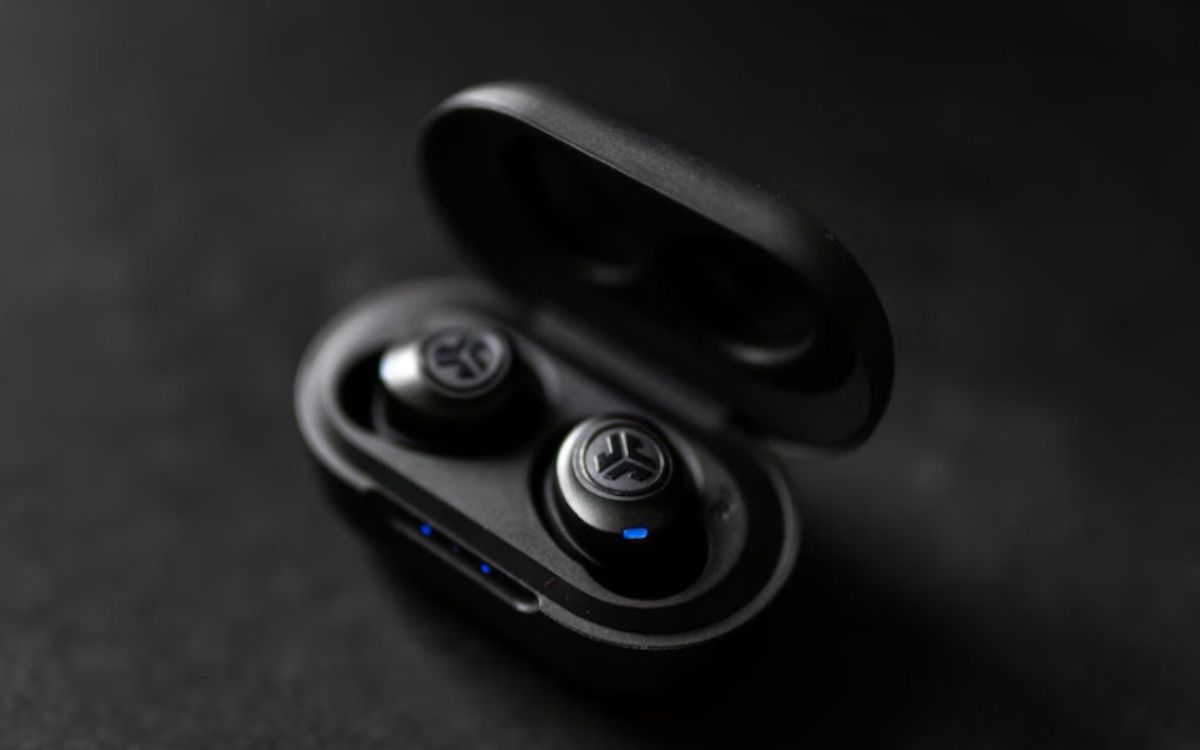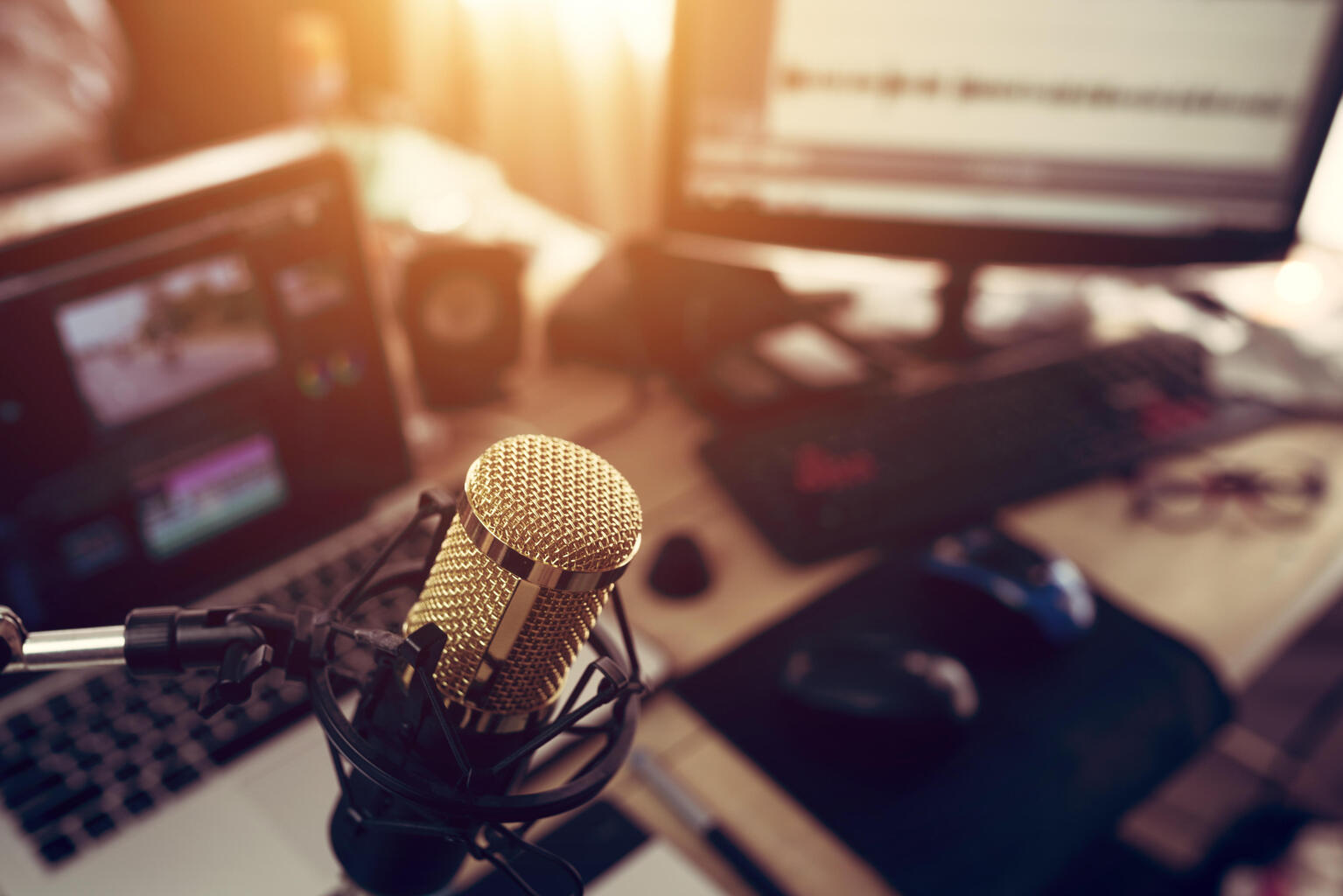Home>Devices & Equipment>Microphone>Why Is My Microphone Only Recording On One Side


Microphone
Why Is My Microphone Only Recording On One Side
Modified: February 17, 2024
Discover why your microphone is only recording on one side and how to fix it. Learn troubleshooting tips for your microphone not picking up sound.
(Many of the links in this article redirect to a specific reviewed product. Your purchase of these products through affiliate links helps to generate commission for AudioLover.com, at no extra cost. Learn more)
Table of Contents
Introduction
Understanding the One-Sided Microphone Dilemma
Have you ever experienced the frustration of listening back to a recording only to discover that the sound is coming through on one side only? This perplexing issue, commonly encountered by individuals using microphones for various purposes such as recording podcasts, making voiceovers, or engaging in online calls, can be quite baffling. Understanding the potential causes behind this one-sided microphone recording phenomenon is crucial in resolving the issue and ensuring a seamless audio experience.
When a microphone records sound on only one side, it can significantly detract from the overall quality of the audio, leading to a lopsided listening experience for the audience. Whether you're a content creator, a professional in the audiovisual industry, or simply an individual who values clear and balanced sound, encountering this problem can be disheartening. However, fear not, as there are various factors that can contribute to this issue, and with the right knowledge and troubleshooting techniques, it can be effectively addressed.
In the following sections, we will delve into the common causes of one-sided microphone recording, explore troubleshooting steps to identify and rectify the issue, and provide practical solutions to ensure that your microphone captures sound faithfully on both sides. By gaining insights into the root causes and implementing the appropriate remedies, you can bid farewell to the perplexing one-sided microphone recording dilemma and enjoy a harmonious audio recording experience.
Common Causes of One-Sided Microphone Recording
When encountering the frustrating issue of one-sided microphone recording, it’s essential to understand the potential culprits behind this perplexing phenomenon. Several common causes can lead to the microphone capturing sound on only one side, disrupting the balance and fidelity of the audio. By familiarizing ourselves with these underlying factors, we can effectively diagnose and address the issue.
One prevalent cause of one-sided microphone recording is a faulty or damaged microphone cable. Over time, cables can become worn or damaged, leading to irregular transmission of audio signals. Additionally, improper connection of the microphone cable to the recording device or interface can result in sound being captured on only one side. Ensuring that the cable is securely and correctly connected is crucial in preventing this issue.
Furthermore, the microphone itself may be the source of the problem. If the microphone’s internal wiring or components are damaged or malfunctioning, it can lead to one-sided recording. Additionally, issues with the microphone’s diaphragm or capsule can result in imbalanced sound capture. Regular maintenance and inspection of the microphone can help identify and address these potential issues.
Another factor to consider is the audio interface or recording device being used in conjunction with the microphone. A faulty or misconfigured audio interface can lead to one-sided recording, as can issues with the input or output settings on the recording device. It’s essential to ensure that the audio interface and recording device are functioning correctly and are compatible with the microphone being used.
Software and driver-related issues can also contribute to one-sided microphone recording. Outdated or incompatible audio drivers, as well as misconfigured recording settings within audio recording software, can lead to imbalanced sound capture. Regularly updating audio drivers and ensuring that recording software settings are properly configured can help mitigate these issues.
Environmental factors, such as electromagnetic interference or radio frequency interference, can also impact microphone performance, leading to one-sided recording. Identifying and mitigating sources of interference in the recording environment is crucial in maintaining balanced and faithful sound capture.
By understanding these common causes of one-sided microphone recording, we can effectively embark on the troubleshooting process to diagnose and address the issue, ensuring that our audio recordings are characterized by clarity, balance, and fidelity.
Troubleshooting Steps
When faced with the vexing issue of one-sided microphone recording, employing systematic troubleshooting steps can help identify and address the root cause of the problem. By methodically examining potential sources of the issue, we can work towards restoring balanced and faithful sound capture through the microphone. Let’s explore essential troubleshooting steps to rectify the one-sided microphone recording dilemma:
-
Checking Hardware and Connections: Begin by inspecting the microphone cable, ensuring that it is not damaged or frayed. Verify that the cable is securely connected to both the microphone and the recording device or audio interface. If using an XLR microphone, check for any bent or damaged pins on the connectors.
-
Inspecting the Microphone: Examine the microphone for any visible damage or irregularities. Ensure that the microphone’s diaphragm and capsule are intact and functioning properly. If possible, test the microphone with a different recording device to determine if the issue persists.
-
Verifying Audio Interface and Device Settings: Check the input and output settings on the audio interface or recording device to ensure that they are configured correctly. Verify that the recording device recognizes the microphone and that the input channels are set up appropriately.
-
Updating Drivers and Software: Ensure that the audio drivers for the recording device are up to date and compatible with the operating system. Additionally, check the settings within the recording software to confirm that the microphone is selected as the input device and that the recording channels are properly configured.
-
Testing in a Different Environment: If possible, test the microphone in a different recording environment to rule out potential sources of electromagnetic or radio frequency interference. This can help determine if environmental factors are contributing to the one-sided recording issue.
By systematically performing these troubleshooting steps, we can narrow down the potential causes of one-sided microphone recording and take the necessary actions to address the issue. Whether it’s a cable connection issue, a microphone malfunction, or a software-related problem, a structured approach to troubleshooting can lead to a resolution that restores balanced and high-quality sound capture through the microphone.
Checking Hardware and Connections
Ensuring the integrity of the hardware components and connections associated with the microphone is paramount when addressing one-sided recording issues. By methodically examining the hardware and connections, we can identify and rectify potential sources of imbalanced sound capture. Here are essential steps to undertake when checking the hardware and connections:
-
Inspect the Microphone Cable: Carefully examine the microphone cable for any signs of damage, such as fraying or exposed wires. If any damage is detected, replace the cable with a new, high-quality one to ensure reliable signal transmission.
-
Securely Connect the Cable: Verify that the microphone cable is securely connected to both the microphone and the recording device or audio interface. For XLR microphones, ensure that the connectors are firmly seated, and there are no bent or damaged pins that could impede the connection.
-
Check for Interference: Be mindful of potential sources of electromagnetic interference in the vicinity of the microphone cable. Avoid routing the cable near power sources, electrical equipment, or other devices that may emit electromagnetic fields, as these can disrupt the audio signal.
-
Test with Alternative Cables and Devices: If available, test the microphone with different cables and recording devices to ascertain if the issue persists. This can help determine if the problem lies with the cable, the recording device, or the microphone itself.
By meticulously examining the hardware components and connections, we can pinpoint and address potential issues contributing to one-sided microphone recording. Whether it’s a damaged cable, a faulty connection, or external interference, proactive assessment of the hardware can pave the way for a balanced and reliable audio recording experience.
Adjusting Microphone Settings
Optimizing the settings of the microphone and the associated recording device or audio interface is crucial in addressing one-sided recording issues. By ensuring that the microphone settings are correctly configured and compatible with the recording setup, we can mitigate imbalanced sound capture and restore fidelity to the audio recordings. Here are essential steps to consider when adjusting microphone settings:
-
Microphone Sensitivity: Check the sensitivity settings of the microphone, if applicable. Adjusting the microphone’s sensitivity level can impact the balance of sound capture, especially in scenarios where one side is being favored over the other. Fine-tuning the sensitivity settings can help achieve balanced audio capture.
-
Input Channel Configuration: Verify that the input channel settings on the recording device or audio interface are appropriately configured for the microphone. Ensure that the input channels are set to receive signals from the microphone in a balanced manner, avoiding any bias towards one side.
-
Polar Pattern Selection: For microphones with selectable polar patterns, such as cardioid, omnidirectional, or bidirectional, ensure that the polar pattern is set according to the recording requirements. Selecting the appropriate polar pattern can influence the directionality of sound capture and contribute to balanced recording.
-
Phantom Power Activation: If using a condenser microphone that requires phantom power, verify that the phantom power is activated on the audio interface or recording device. Inadequate or imbalanced phantom power supply can affect the microphone’s performance and lead to one-sided recording.
-
Software Configuration: Review the settings within the recording software to confirm that the microphone is selected as the input device, and the recording channels are properly configured. Ensure that any panning or balance settings within the software are adjusted to achieve an even distribution of sound capture.
By methodically adjusting the microphone settings and verifying compatibility with the recording setup, we can address potential factors contributing to one-sided recording. Whether it involves sensitivity adjustments, input channel configuration, or software optimization, meticulous attention to microphone settings can lead to balanced and faithful sound capture, enhancing the overall audio recording experience.
Updating Drivers and Software
Ensuring that the drivers and software associated with the recording device and microphone are up to date is essential in addressing one-sided recording issues. Outdated or incompatible drivers, as well as misconfigured software settings, can contribute to imbalanced sound capture. By updating drivers and verifying software configurations, we can mitigate potential impediments to balanced audio recording. Here are essential steps to consider when updating drivers and software:
-
Driver Updates: Check for updates for the audio drivers associated with the recording device or audio interface. Visit the manufacturer’s website to download and install the latest driver versions compatible with the operating system. Updated drivers can resolve compatibility issues and ensure optimal performance.
-
Recording Software Updates: Verify that the recording software used with the microphone is updated to the latest version. Software updates often include bug fixes and enhancements that can improve the functionality of the recording interface and address audio-related issues.
-
Compatibility Checks: Ensure that the installed audio drivers are compatible with the operating system and the recording software being used. Incompatibility between drivers and software can lead to irregular audio capture and imbalanced recording.
-
Configuration Review: Review the settings within the recording software to confirm that the microphone is selected as the input device, and the recording channels are properly configured. Check for any software-related settings that may impact the balance of sound capture and adjust them accordingly.
-
Driver Reinstallation: If persistent issues are encountered, consider reinstalling the audio drivers associated with the recording device. Reinstallation can help address potential driver corruption or conflicts that may be contributing to one-sided recording.
By diligently updating drivers, verifying software compatibility, and reviewing configuration settings, we can address potential software and driver-related factors contributing to one-sided recording. Whether it involves driver updates, software reconfiguration, or compatibility checks, proactive maintenance and updates can pave the way for balanced and high-quality audio recording, ensuring a seamless and reliable recording experience.
Conclusion
Addressing the perplexing issue of one-sided microphone recording requires a systematic approach to troubleshooting and remediation. By understanding the common causes of this phenomenon and employing targeted solutions, individuals can restore balanced and faithful sound capture through their microphones. Whether used for professional audio production, content creation, online communication, or personal recordings, a microphone that faithfully captures sound on both sides is essential for delivering high-quality audio experiences.
Through thorough hardware and connection checks, individuals can identify and rectify issues such as damaged cables, faulty connections, and environmental interference that may contribute to one-sided recording. Additionally, adjusting microphone settings, updating drivers and software, and verifying compatibility with recording setups can mitigate imbalanced sound capture and ensure optimal performance.
It is crucial for individuals to approach the troubleshooting process with patience and attention to detail, systematically examining each potential source of the issue and implementing targeted solutions. By doing so, they can overcome the challenges of one-sided microphone recording and enjoy a seamless and balanced audio recording experience.
Ultimately, the ability to address one-sided microphone recording not only enhances the quality of audio content but also fosters a more engaging and immersive listening experience for audiences. By leveraging the insights and solutions presented in this article, individuals can navigate and conquer the intricacies of microphone recording, ensuring that sound is faithfully captured on both sides, and delivering audio experiences that resonate with clarity and balance.











